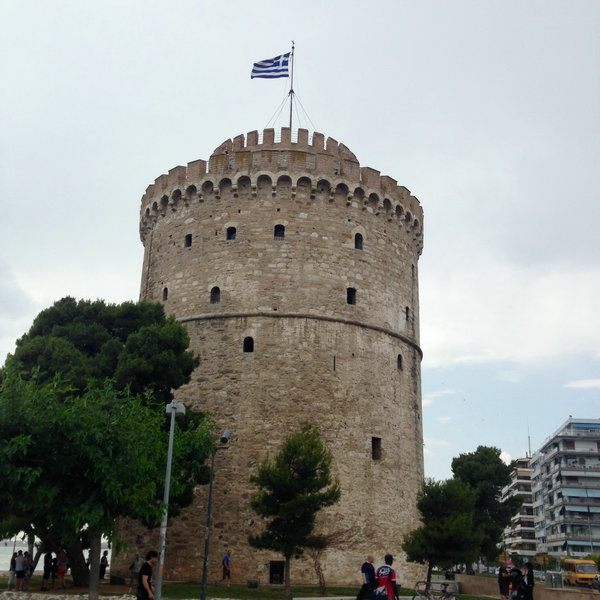 |
|
The White Tower was an Ottoman prison until it was converted into an exhibition hall.[Photo by Erik Nilsson/ China Daily] |
Thessaloniki is built in layers-strata of time, of transformation, of thought.
A trendy part of town is the halo of hip boutiques that frame Navarino Square, which encases the crumbs of Galerius' palace from AD 305.
The city's 5-kilometer promenade hosts what are perhaps the city's most iconic landmarks-one archaeological, one avant-garde.
Emblematic of the city's past is the White Tower-an Ottoman prison renamed from the Blood Tower by an inmate who was pardoned rather than beheaded.
Perhaps the most celebrated icon of Thessaloniki as a center of contemporary art is a metal installation of massive mesh umbrellas that once graced Time magazine's cover.
Both the tower and the umbrellas are frequently used as wedding-photo backdrops, and a new trend is for couples to hang locks on the umbrellas to express their devotion. The tower has been an exhibition space since 2008.
The promenade is punctuated with about 20 themed parks, such as the Garden of Noises, where the sea breeze emits eerie sounds as it whooshes through the flora.
The seaside walkway runs parallel to chockablock cafes and bars with outdoor seating, where locals nurse Frappuccinos (the favorite local caffeinated beverage) and sip from wineglasses (the surrounding area is sheathed in vineyards) as they gaze at the waves.
A sea of red-tile roofs can be seen from the Ano Poli, the highest and oldest part of the city.
Its elevation safeguarded its ancient buildings and Byzantine walls from the great fire of 1917, preserving it as an island of the past.
Local lore contends a woman frying fish caused the inferno.
Views from the Upper Town's Trigonio Tower offer panoramas of the town, including most of Thessaloniki's 15 UNESCO World Heritage sites, 13 of which are Byzantine churches that still host services. They stand among thickets of museums, bistros and theaters in the shadow of Mount Olympus-the throne of the ancient gods' king, Zeus.
Also clear from the tower are the ancient, old and new ports. The old dock's warehouses have been repurposed as cultural venues, including those for hosting the Thessaloniki International Film Festival, and cinema and photography museums.
The ancient port used during the Maritime Silk Road contributed to Thessaloniki's diversity.
The city has been home to sizable populations of Greeks, Turks, Sephardic Jews, Romans, Franks, Egyptians and Indians through antiquity, Byzantine, Ottoman and modern times.
That's not to mention Nazi occupiers, who shipped most of the city's 56,000 Jews to concentration and labor camps from a rail station slated to become a museum to this history. (About 1,200 Jews remain today, as does one of 12 synagogues.)
|
|
|
|
|
|
|
|
